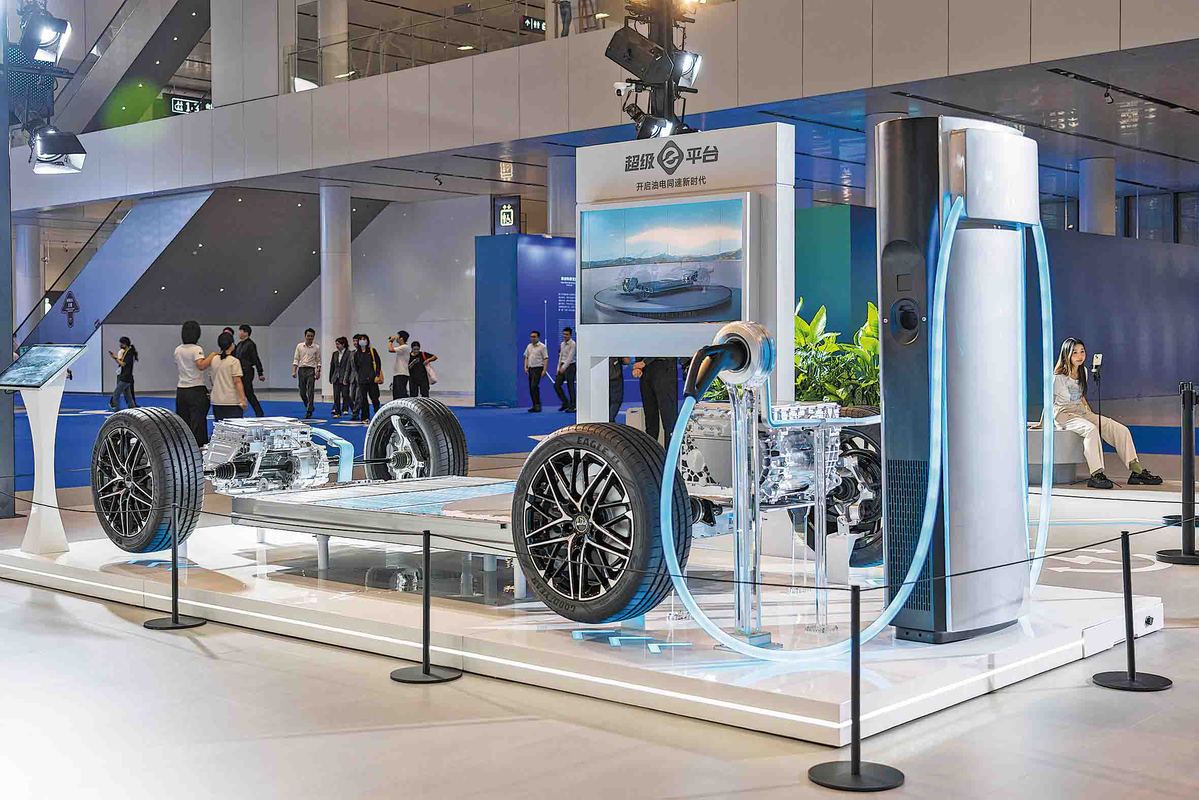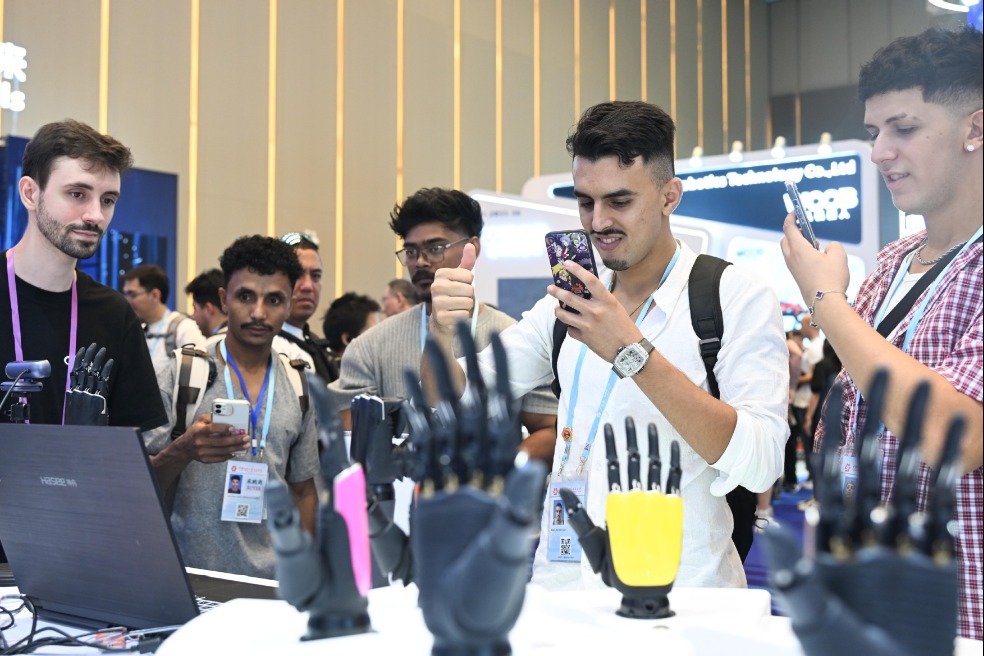Innovation, supply chains fuel NEV growth
Production of such vehicles surged 37.3% to over 9.6 million units in first eight months


Supply chain advantage
A robust, deeply integrated and open supply chain — from raw material processing and battery manufacturing to vehicle assembly and software development — continues to underpin the sector's momentum.
Industry giants like CATL and BYD are complemented by a dense network of suppliers, many of whom are clustered in industrial hubs across the Yangtze River Delta and the Pearl River Delta, facilitating efficient collaboration and rapid iteration.
The Yangtze River Delta, for instance, has built a "four-hour industrial ecosystem", where any NEV plant can obtain all required parts within a four-hour drive.
Within this collaborative cluster, Shanghai offers the industry a technological "brain" comprised of chips and software. Changzhou in Jiangsu province, some 200 km west of Shanghai, supplies the "heart" in the form of power batteries, while Zhejiang province's Ningbo — 200 km to the south — contributes the "body" of vehicles via advanced integrated die-casting machines.
Changzhou has established an NEV industrial chain covering more than 10 sectors, including powertrains, braking systems, steering systems, electrical instrumentation, lighting, vehicle bodies and interior trim. Over 3,000 related manufacturing enterprises have gathered in this city, generating an annual output value of 300 billion yuan ($42.2 billion).
Ecosystem crosses borders
The openness of China's industrial ecosystem has attracted leading international automakers.
At the 2025 World New Energy Vehicle Congress recently held in Haikou, Hainan province, Sean Green, president and CEO of BMW Group Region China, showcased the automaker's partnerships with China's domestic leaders in batteries, driver-assist systems and AI foundation models.
Green highlighted joint projects with battery giant CATL to co-design large cylindrical cells, a partnership with Chinese self-driving startup Momenta to develop driver-assist software, and a collaboration to integrate Alibaba's AI foundation model and Huawei's intelligent-vehicle stack into BMW cars.
"This goes beyond conventional partnerships," said Green, adding that "such projects form a symbiotic ecosystem that benefits both sides".He also expressed the view that "technology openness is the valuable experience we took from China's success".
Toyota, meanwhile, signed an agreement with the Shanghai municipal government in April to invest 14.6 billion yuan in establishing an NEV company to produce Lexus-branded electric vehicles and Toyota power batteries.
Building on its domestic strength, China's NEV sector is going global and forging partnerships with automotive supply chains worldwide to achieve shared growth.
In Thailand, BYD's new Rayong plant features advanced flexible production, boosting local industrial capabilities. In Malaysia, Geely's investment is helping revive local automaker Proton and transform Tanjong Malim into an ASEAN car manufacturing hub by jointly developing an automotive high-tech valley.
Through such efforts, Chinese NEV manufacturers are exporting an entire industrial ecosystem to their partners, fostering local automotive development and enabling collaborative growth worldwide.
Xinhua
























